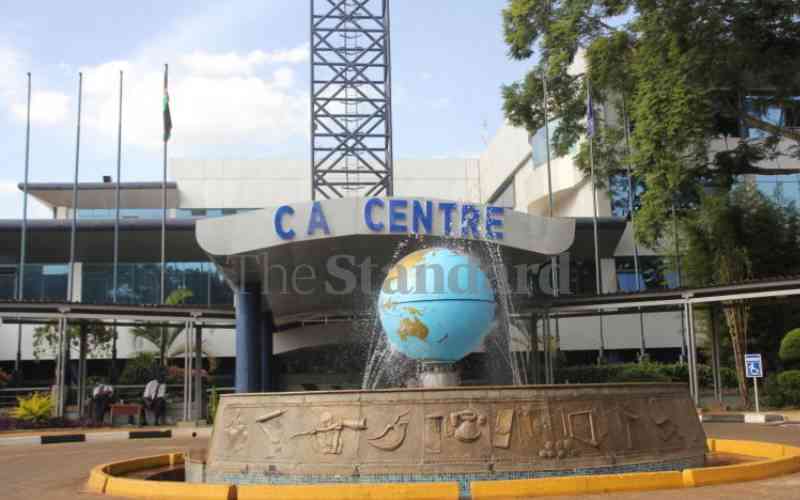 |
|
Professor Njuguna Ndung’u, governor of the Central Bank of Kenya. |
By Jackson Okoth
Kenya: Since his appointment as governor of the Central Bank of Kenya, in March 2007, Professor Njuguna Ndung’u has steered the institution towards implementation of various reforms that have resulted into a vibrant and most modern and monetary system in the region.
Upon his appointment, Professor Ndung’u also committed to prioritize policies that would enable CBK support the Government’s development goals as espoused in Vision 2030.
Improved monetary policy coordination
The monetary policy stance adopted since 2007 has been successful as reflected by robust economic growth, a low and stable inflation regime and decreased volatility in the interbank rate. In addition, the Central Bank Rate (CBR) has effectively co-ordinated movement in short-term interest rates that has made CBR gain acceptance as a signalling mechanism for monetary policy stance.
Indeed, the financial markets eagerly await the announcement from the Monetary Policy Committee (MPC) meetings on the CBR. Monetary policy communication has been enhanced through the regular meetings between the MPC and Chief Executive Officers (CEOs) of commercial banks, the media and MPC market perception surveys targeting banks and the real sector.
Along the way, however, the effective discharge of this mandate was slowed by challenges that were not foreseen. First, post –election disruptions in early 2008 derailed the economy from its high growth trajectory that had been recorded since 2003. Secondly, the subprime mortgage in the US, the euro crises in the Euro zone and the MENA (Middle East & North Africa) political crisis, precipitated economic shocks that negatively affected the economy.
Nevertheless, the Bank rapidly mobilized the tools of monetary policy to ensure that neither the post-election problems nor the international financial problems became embedded in the Kenyan economy.
The effectiveness of the monetary policy actions has also been improved through regular review of the monetary policy framework to facilitate transmission efficiency and reduce transmission lags. By scaling up financial inclusion, deepening the financial and bond markets, the initiatives to improve the transmission of monetary policy impulses has borne fruit.
Financial sector reforms
Kenya can boast of having a dynamic financial sector that has grown notably in the last decade. The key reason for this growth has been a commitment to financial sector reforms by the Government, through its Economic Recovery Strategy (ERS), 2003 – 2007 and the current economic blue print, Kenya Vision 2030; and various financial sector initiatives aimed at enhancing the sector’s growth and development.
Central Bank of Kenya, in line with its financial sector mandates, under these reforms, has been in the fore front in pushing for more affordable financial services to Kenyans while maintaining the stability, efficiency and integrity of the financial system.
The banking sector, under the oversight of the Central Bank of Kenya, has contributed to this growth and development, positively transforming the lives of millions of Kenyans. This has been witnessed by a significant growth of banking sector service points which have exponentially grown over the years.
This includes the dramatic multiplication in the number of customer deposit accounts; with majority being micro-accounts holding less than Kshs 100,000. The effects of these transformations have been felt in increased levels, reach and depth of access to financial services in the country and by extension the growth and development of Kenya’s economy.
In 2002, only about one million people had access to banking services and by the end of 2012, more than 20 million Kenyans had access to banking services.
These remarkable indicators were made possible through specific financial sector policy & regulatory reforms and attempts to further build the financial infrastructure under the ambit of the Central Bank. This include:
a)Licensing of deposit taking microfinance institutions (DTMs) to serve the lower end of the Kenyan populace, particular small and micro enterprises and low income populace previously locked out of the formal financial sector.
b)Introduction of agency model for banks and deposit taking microfinance institutions in 2009 and 2012, respectively, to permit banks and deposit taking microfinance institutions to offer specified banking services through third parties (agents), to push forward financial inclusion frontiers in un-served areas. This has led to more than 18,000 approved bank agents’ facilitating over 51 million transactions valued at over Kshs 268 billion leveraging on mobile phone technology. Agency banking is an initiative that CBK expects to propel the levels of formal financial inclusion.
c)Facilitation of mobile phone financial services (MFs); With over 20 million people served by over 60,000 agents handling over USD 40 million worth of MFS transactions per day in Kenya, the provision of mobile phone finance services, which originated in 2007 in Kenya is now celebrated all over the African continent and the world over. All these, with the stability and integrity of the financial system remaining intact. A trend setter in Africa, Kenya’s mobile finance services solution have played a significant role in increasing access to financial services to Kenyans cost effectively.
d)Entrenching Credit Information Sharing to expand access to credit by tackling the twin problem of information asymmetry (moral hazards and adverse selection) and lack of physical collateral. Lenders are able to obtain a comprehensive credit history of borrowers at fairly reasonable cost than before.
e)The development of the Infrastructure Bond Program; The infrastructure bonds target infrastructure projects in each fiscal year under the Public Investment Program. In collaboration with the Treasury, the Bank has issued 20-year, 25-year and 30-Year bonds. The 30-Year Bond is specially intended to support the buildup of national savings, as envisaged in the Vision 2030. The proceeds are used in development of social and economic infrastructure including the implementation of the new Constitution.
f)Lowering cost of doing business: Currency Centres have been established in Nyeri, Nakuru and Meru. This is the first phase whose partnership with Kenya Bankers Association has seen the CBK partner with commercial banks to distribute currency and lower transactions costs for commercial banks.
g)Deposit Insurance Mechanism: The Central Bank has spearheaded the development and transition in the Kenya deposit insurance system through the enactment of the Kenya Deposit Insurance Act, 2012, which will establish the Kenya Deposit Insurance Corporation (KDIC).
h)The Central Bank has implemented and facilitated other innovative solutions including; the introduction of shariah compliant banking products; modernisation of the payments, settlements and clearing systems; and extension of the maturity profile of the Government Debt as the appointed fiscal agent.
Despite these remarkable developments in the Kenyan financial sector, there still remains great need for further investment and growth of the financial sector. Towards this end, investments in building innovative solutions will continue to remain critical. Deepening the financial sector will reduce costs of doing business and cost of funds to facilitate investments.
 The Standard Group Plc is a multi-media organization with investments in media
platforms spanning newspaper print operations, television, radio broadcasting,
digital and online services. The Standard Group is recognized as a leading
multi-media house in Kenya with a key influence in matters of national and
international interest.
The Standard Group Plc is a multi-media organization with investments in media
platforms spanning newspaper print operations, television, radio broadcasting,
digital and online services. The Standard Group is recognized as a leading
multi-media house in Kenya with a key influence in matters of national and
international interest.
 The Standard Group Plc is a multi-media organization with investments in media
platforms spanning newspaper print operations, television, radio broadcasting,
digital and online services. The Standard Group is recognized as a leading
multi-media house in Kenya with a key influence in matters of national and
international interest.
The Standard Group Plc is a multi-media organization with investments in media
platforms spanning newspaper print operations, television, radio broadcasting,
digital and online services. The Standard Group is recognized as a leading
multi-media house in Kenya with a key influence in matters of national and
international interest.










